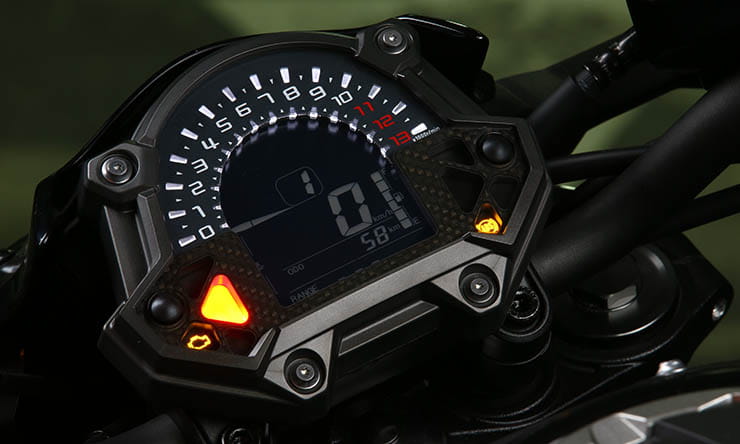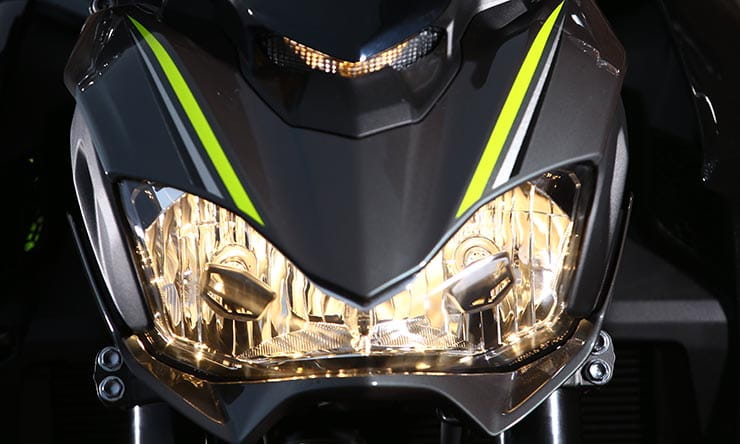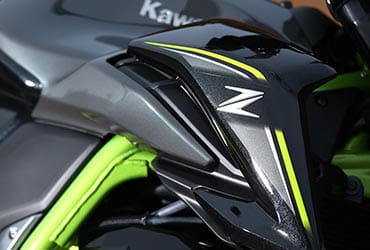As the Z900 flicked sweetly through another set of bends in the hills near Almería, feeling impressively light and well-balanced on these twisty Spanish roads, a flashback from my journey to get here confirmed why Kawasaki’s new naked four was behaving so much better than its predecessor the Z800 could have done.
I’d ridden to the airport on my own bike, laden down with a large, unwieldy kit-bag which, the airline scales had revealed, was right on the 20kg limit. Given that the Z900 is not only 12bhp more powerful than the Z800 but also lighter by more than the weight of that hefty bag, it’s no surprise that the new naked four felt lively and manoeuvrable.
The Z900 is an important bike for Kawasaki because its predecessor was among the firm’s most popular models, despite being distinctly on the sturdy side itself, even topping the sales charts in some foreign markets. But there was plenty of room for improvement because, as the new bike’s project leader, Seiji Hagio, admits, owners’ feedback on the Z800 tended to describe it as “fun and exciting… but heavy”.
There was no need for alternative modes because the one provided worked perfectly well, the Zed’s sweet throttle response combining with its broad, glitch-free torque delivery and light-action, slip-assist clutch to make the bike very easy to ride. The first five gears are relatively closely spaced, with a larger gap after that to give a slight overdrive feel for top-gear cruising.
Not that a bigger gap between ratios would have been a problem. The Kawasaki pulled sufficiently hard through the midrange that I didn’t have to worry about which gear it was in, as we headed south towards the Mediterranean from the launch base at La Envía, then along the fairly busy coast road where its ability to overtake on a brief burst of throttle was welcome.
A short stretch of A7 motorway was enough to confirm that it has plenty at the top-end, too, as the bike stormed forward enthusiastically, staying smooth as the analogue tacho jabbed towards the 11,000rpm redline in the lower gears, accompanied by a flash of the adjustable shift light. Inevitably there was plenty of wind-blast at higher speeds, as there’s virtually no protection. I didn’t find noisy turbulence a problem but was a bit disappointed by the Zed’s muted intake sound, which didn’t match the Z1000’s howl although Kawasaki say they tuned the airbox specially.
Chassis performance, on the other hand, was well up to expectations. The bike was reassuringly solid on the highway, but once we’d headed north onto twistier roads its respectably light weight, fairly sporty geometry and capable, if fairly basic suspension combined to make it both fun and easy to ride. It steered with a very neutral feel, with minimal effort required even when rapid direction changes were required.
There’s 120mm of travel from the 41mm upside down forks, and 140mm from the near horizontally mounted, rising-rate shock. That seemed about right, and was enough to allow decent ride quality. And both ends were sufficiently firm and well damped to keep the Kawasaki feeling controllable even when the pace got pretty hectic, and it was slowing hard into the hairpins thanks to its respectably powerful front-brake blend of four-pot calipers and 300mm wavy discs.
The Dunlop D21 rubber didn’t let it down either, and there was ample ground clearance on mostly smooth but occasionally dusty Spanish roads. One slightly surprising omission was a traction control system, as featured on rivals including Suzuki’s GSX-S750, Yamaha’s MT-09 and Triumph’s revamped Street Triple.
Kawasaki say they concentrated on keeping the bike simple and controllable, though cost and market positioning presumably influenced the decision. So despite its modern, Sugomi-influenced look the Z900 lives up to its name by having a slightly basic, old-school character, which some potential buyers will doubtless like just fine.











